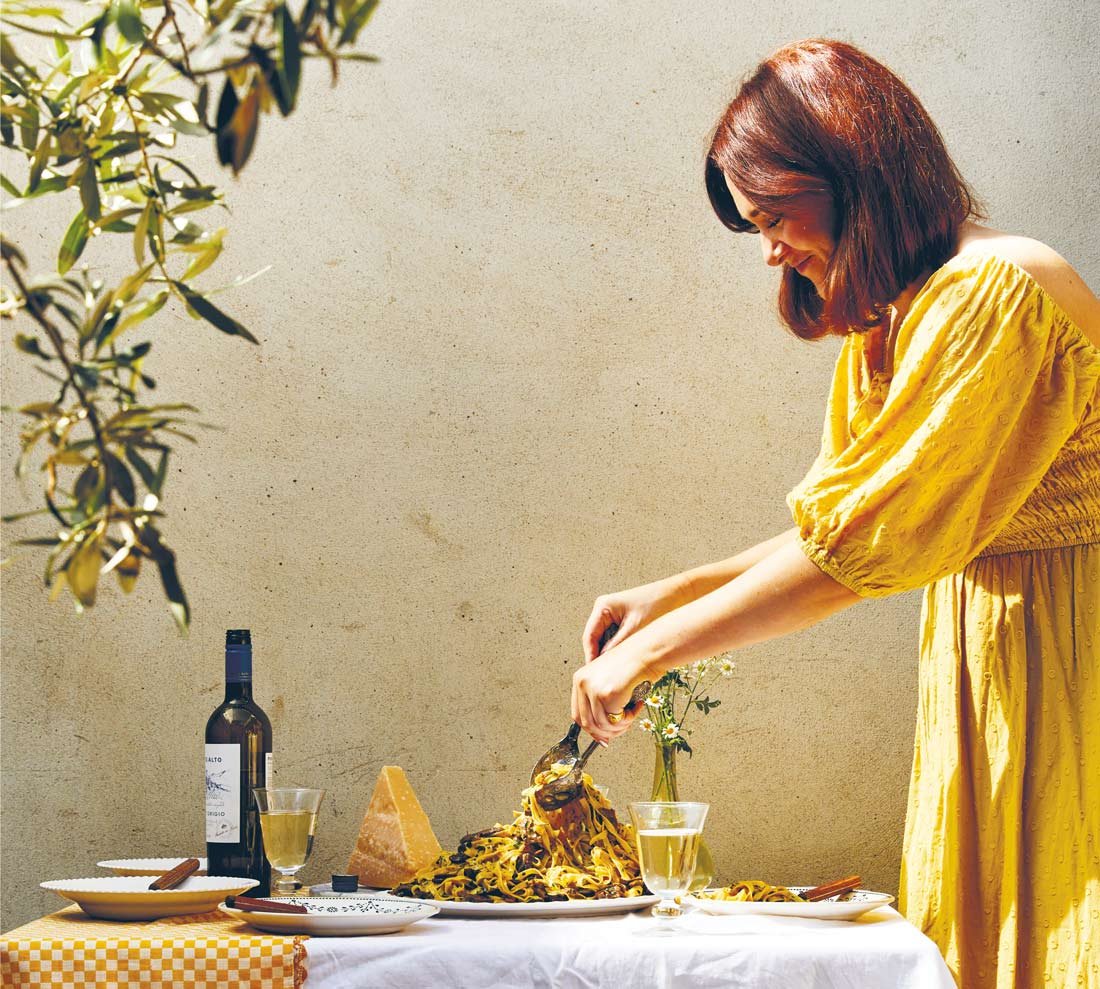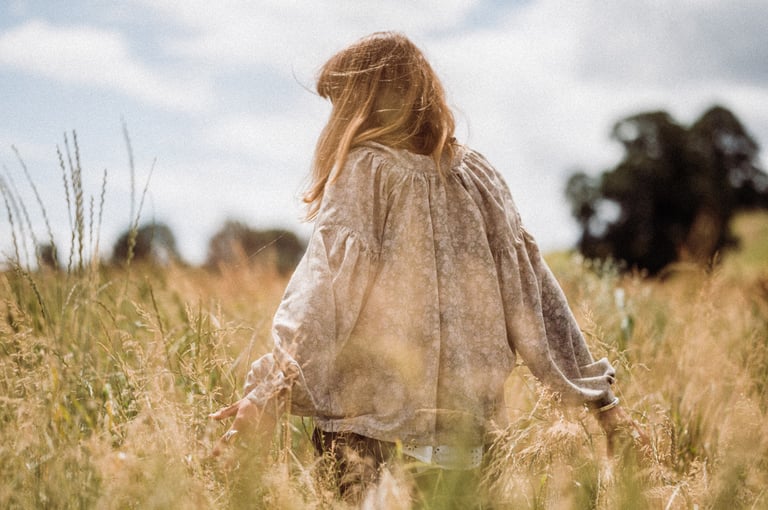Chef and food stylist Rosie MacKean shares some clever ways to take your entertaining next‑level
When it comes to laying a table, Rosie MacKean has plenty of charming ideas for creating a beautiful, relaxed and inviting space for dinner‑party guests. Even as a child growing up in Bath, one of her favourite activities was to invite friends to supper. Admittedly, in those days she was serving them steak and chips made from plastic blocks, but the urge to be a brilliant hostess has never left her.
At her home in Hackney, Rosie has perfected a curation of foolproof menus and table‑styling secrets for her new book Good Time Cooking, which is full of hacks and recipes for easy entertaining.
Rosie MacKean has shared a few of her stress‑free tricks of the trade to ensure the next time you have friends over they’re as wowed by your food styling as they are by your cooking.
Dine family-style
My biggest tip for styling food for dinner parties is barely a trick to be honest, but it’s an important place to start. When serving a crowd, it’s a thousand times easier to plate family-style where people help themselves to shared dishes.
It is also far more generous, inviting and, quite frankly, dramatic to put a few big, heaped dishes down on a table – and it’s a lot less work to plate one dish than six.
Letting people serve themselves and share things across your table is one of the best things about convivial dining. It relaxes your guests, gets them talking and engaging with the food and leaves you the space to join in and be a part of it, rather than being a glorified waiter.

Style a sharing table
I love using a selection of oval, square and round plates or platters. These don’t always need to be huge. Sometimes it’s better to do a few medium‑size portions to spread across the table rather than something ginormous.
Serving food in pans or oven trays is fine – don’t feel it’s too informal to put them on the table. Just make people aware when something is hot, and provide tea towels or protection where necessary. In fact, this is a great way to break up a table and create interest in the overall scene.
Plating up
Always try to leave an empty border on a plate. You want to avoid overfilling plates because the effect of the finished dish can be lost or, worse, spilled. Leaving space means you will be able to see any finishing touches too.
If in doubt, drizzle with good olive oil. Not only does it taste good, it makes your dish shiny – and drips and pools on the sides of the plate are always sexy.
Don’t style things that don’t need it. Lasagne or pies are good examples; some dishes get styled in their making and need only to be cooked and served.
Neatness is the enemy of gloriously edible food. Drizzles, drops, sprinkles or smears are evocative and appetising.
Similarly, try and avoid regularity or patterns with your food (unless it’s a pissaladière, of course). When plating, let different elements touch and bleed into one another, create piles or heaps and fun shapes. Don’t overthink it!

Consider the backdrop
Most food looks good on pastel colours. I tend to gravitate towards blues, greens and pale reds and pinks, which are often patterns on top of cream or white backgrounds. The rich, darker tones in food will really sing when paired with lighter coloured plates.
I almost always avoid primary colours on crockery as their boldness can wash out the tones of the food. Similarly, I never use brown or black crockery.
Salads, pasta and risotto are for plates, not bowls! You see the texture of these dishes so much better when they are served on a plate.
Serving food on items that are not crockery gets a big yes from me. Having a variety of textures (such as ceramics, metal trays or pans, and wooden boards) creates a more lived‑in, cosy vibe.
Tablescaping
If you have lots of tablecloth and napkin options, then use them to add interest to the table. Like most of my stuff, I hunt for these in charity shops and flea markets. I don’t think they’re always necessary though, and a few jazzy plates will often do the job.
A great way of creating height on the table is by using candles. I always have a few of varying lengths (mismatched, of course). They also create beautiful light for your food.
Flowers on the table can be bulky and make it hard to speak to people across from you, but I adore how they brighten everything up. I like to arrange little posies with only three or four stems and spread them down the table. You don’t need proper vases: old jam jars, little glasses or empty bottles are fine. Just choose two to three different types of flower and play with them – you don’t need a huge range to make something pretty.









